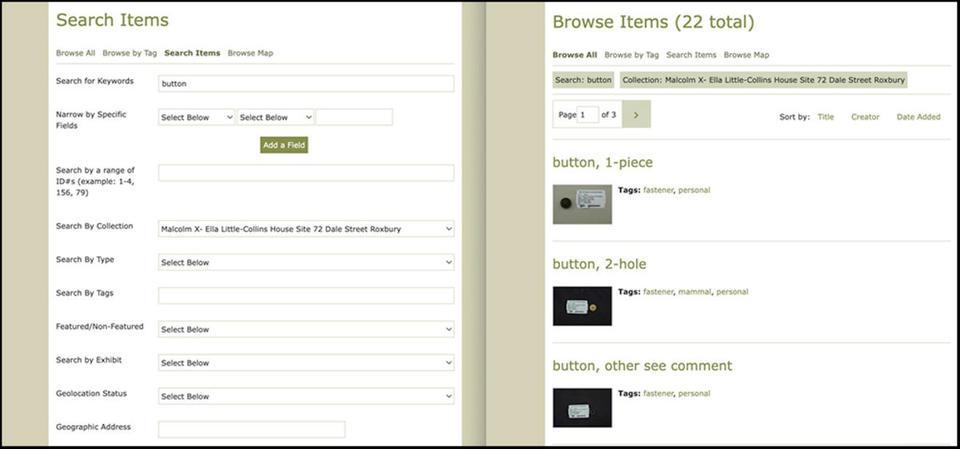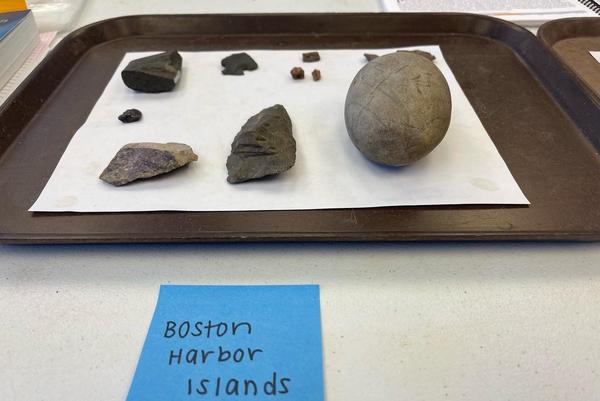
Funded by a $350,000 grant from the National Endowment for the Humanities, the Program hired Project Archaeologist Lauryn Sharp and Digital Archaeologist Nadia Kline to complete the project. The goal of the project is to make the collections accessible online through a searchable artifact database. We currently have 8 collections available online at bostonarchaeo.omeka.net
In order to make our collections accessible online, they needed to be in digital format. So what does it take to digitize an archaeological collection? We had to sort, rehouse, digitally catalog, and digitally photograph over 213,000 artifacts.The team of people assisting Nadia and Lauryn in the digitization included UMass Boston Historical Archaeology graduate assistants Alexander Patterson, David Spidaliere, Sarah Carr, and Gary Ellis, Brian Schools and volunteers Carole Mooney and Kathleen Shea.
The tens of thousands of digital images created a challenge. Before we could add them to the database, we had to rename each artifact photo with its catalog number. This ensured that they would match up with the appropriate catalog entry. We realized that it would be impossible to manually rename over 50,000 photographs within our timeline. To solve this issue, we enlisted the help of an expert.

Dr. Sebastian Muñoz-Najar Galvez is the Bluhm Family Assistant Professor of Data Science and Education at the Harvard Graduate School of Education. He and Digital Archaeologist Nadia Kline worked together to develop a computer script to automate the renaming of the photos.
Using a technology called Optical Character Recognition (OCR), their script can convert the text of each artifact tag in a photo into machine-readable data. It then isolates the catalog number from this text data and renames the image file with that number. It can also detect and rotate an improperly oriented photograph and convert it into different file types.
Using this script, we have renamed over 50,000 artifact images and saved hundreds of hours of human work.
Nadia and the digitization team, including Graduate Assistants Brian Schools and Alexander Patterson, were able to use this time to focus on other modes of digitization. They used laser scanning and photogrammetry to create multiple 3D models of artifacts. You can download the team's scanned artifacts for free to print with a 3D printer at sketchfab.com/BostonArchaeology
This project has been made possible in part by a major grant from the National Endowment for the Humanities: Democracy demands wisdom.